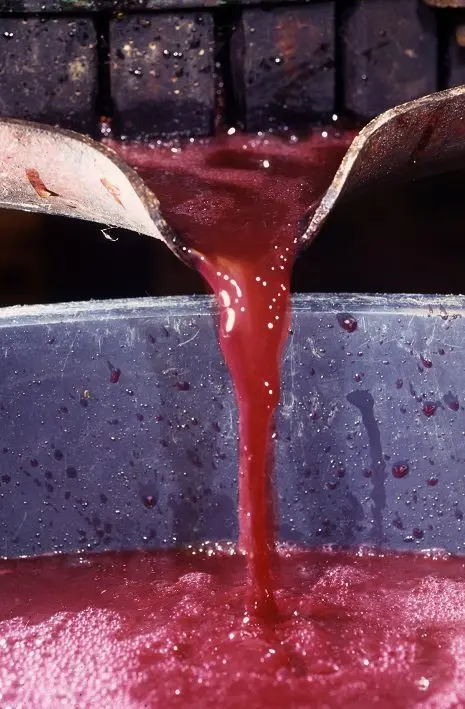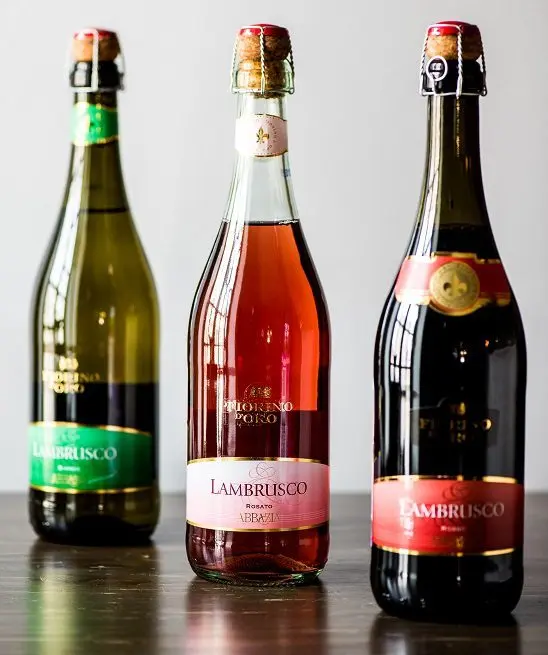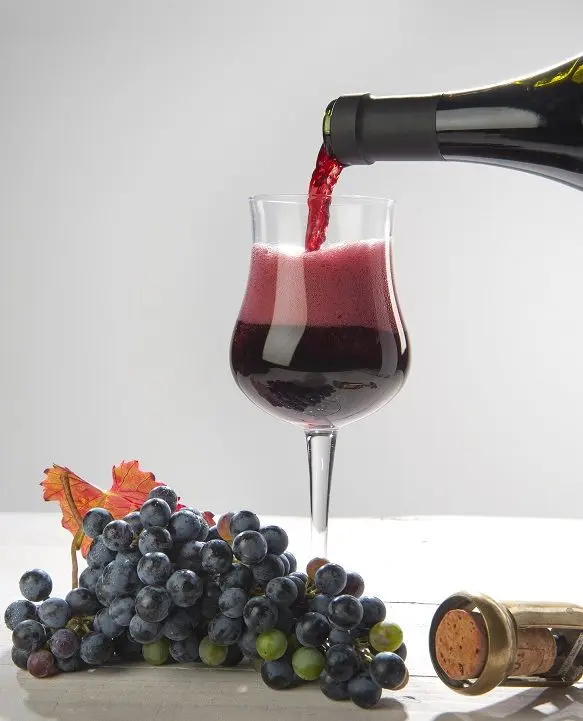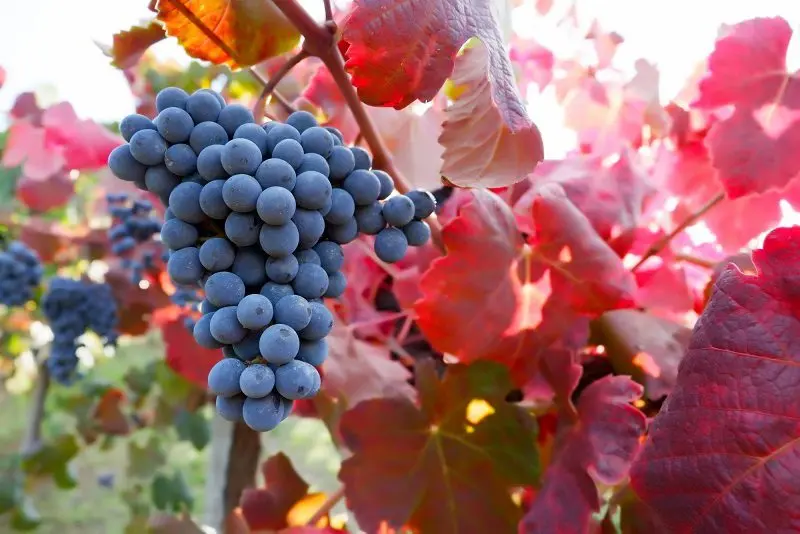Contents
Lambrusco is a visible proof that sparkling wine does not always belong to the upper price segment. This Italian drink successfully replaces both French champagne and Spanish cava. Light, frothy, young – Lambrusco warms the blood, gladdens the heart and does not make a hole in the family budget.
Production features
Any Lambrusco wine is made from grapes of the same variety, but the Ancelotta variety is often added to the blend to give the drink a deeper color and bright aroma. All wines of this series have a strength of 6-9 degrees and have a light floral-fruity taste. The nuances depend not only on the type of Lambrusco (red, white, pink), but also on the appellation (the region in which the grapes are grown), and the weather conditions for ripening, as well as harvesting.

A small proportion of Lambrusco wines are made according to the classic champagne technology, information about this must be indicated on the label, since such wine immediately goes into a higher price category.
Much of Lambrusco gets its zesty effervescence through the Charmat method. The first mention of this technique dates back to 1305 – the secondary fermentation of wine (saturation with carbon dioxide) takes place not in bottles, as is the case with champagne, but in hermetically sealed steel containers. Then the drink is bottled under pressure, and it immediately goes on sale, still “fermenting”. This significantly reduces the cost of technology, but has little effect on taste. Most consumers will not notice the difference compared to classic sparkling wine technology.
Difference between Champagne and Lambrusco
These two types of sparkling wines have exactly two things in common: the bubbles and the shape of the bottle. There are many more differences:
- Lambrusco and champagne are made from different grape varieties.
- The taste of Lambrusco depends on the blend and the area where the grapes grew. Champagne in this sense presents much less surprises, since it is produced in only one French province – Champagne.
- French sparkling wine is made according to the classic champagne technology, the Charmat method is used to obtain Lambrusco.
- Italian “pop” is white, pink, red, in turn, champagne is almost always only white.
- The most popular Lambrusco is sweet, most Champagne wines are semi-dry. These wines have occupied different market niches.

Types of Lambrusco
Lambrusco wine comes in red, white (made from red grapes, just the skin is separated before it has time to color the juice) and pink (the skin is only slightly in contact with the juice).
Also on the market you can find a full line of flavors: from dry (no sugar) to very sweet. We traditionally categorize Lambrusco as a sparkling wine, but in Italian it is called “frizzante” – “semi-sparkling”. Wine pleasantly pinches the tongue, but does not “hit the nose.” The Lambrusco grape variety is unpretentious and gives a bountiful harvest, it produces a light, delicate wine that goes well with almost any dish.

- Lambrusco di Sorbara is a light red “young” wine with a violet aftertaste. This variety has an amazing property: often the vine sheds flowers prematurely, so the quantity turns into quality, and the berries are saturated with a deep sensual taste.
- Salamino di Santa Croce is a clear ruby wine with a full-bodied taste. It goes well with the first and second courses, has a fruity aftertaste.
- Grasparossa di Castelvetro is a generous and full aroma with nuances of peach, ripe walnut, grapes. A slightly noticeable bitterness appears in the aftertaste, this tannic wine whets the appetite and improves digestion. In the glass, the drink plays with ink tones; when pouring, a dense raspberry “hat” appears.
- Lambrusco di Modena is a thick wine with the taste of creamy mousse, black berries, ripe grapes.
- Lambrusco Mantovano – a rich fruit palette: cherry, strawberry, plum. It goes well with traditional Italian dishes, especially risotto.
- Della Emilia Bianco is a semi-sweet white wine with a pearly golden color. On the palate, you can feel the nuances of pear and pineapple.
- Della Emilia Rosso Amabile – Semi-sweet wine of ripe pomegranate color, with the aroma of meadow flowers, tart spices, cherry juice.
- Bondamat Ancelotta della Emilia IGT is the only Lambrusco wine made from 85% Ancelotta grapes. Intense color, full flavor.
How to drink and what to eat Lambrusco
Lambrusco is not customary to age in wine cellars for decades, it is drunk young. A sign of strict adherence to technology is a dense foam in a glass, a sparkling color and a “pungent” taste.

Dry and semi-dry wine is cooled to 10 degrees when served, sweet variations can be a couple of degrees colder.
You can serve fruits, meat snacks, cakes, fish, meat with Lambrusco – in a word, everything that is customary to put on the table in decent houses.
The history of Lambrusco wine: legends and facts
mythological version. Luigi Bertelli at the end of the XNUMXth century outlined a romantic look at the history of the emergence of Italian sparkling wine. Once upon a time, wrote the author of the Diary of Gian Hurricane, a bloody war raged between Bologna and Modena. The losses on both sides were so great that even the Roman gods did not remain indifferent: the warrior Mars sympathized with the dying Modenese, and the merry fellow Bacchus gave them a grain of grapes to console them in sorrows.
A tree with juicy and sweet berries has grown from the stone. From them, in turn, came out fresh tart wine, which the soldiers of both armies drank with pleasure. The goddess of love, Venus, added magical nectar to the drink, and what would later be called Lambrusco became sparkling.

The young wine was especially liked by the innkeeper, who personally started breeding a new variety and diversified the menu of his tavern with a refreshing alcoholic drink. They say, when asked why the wine is so tannic and acid, he answered: “L’amo brusco” – “I like tart”, and so the drink got its name.
According to another version, Lambrusco comes from the Latin word labrusco – “wild”. In any case, it is clear that we are talking about a democratic drink with a simple and sometimes even coarse bouquet, and not a delicate dish for patricians and connoisseurs.
With or without the participation of the gods, and “Lambrusco” was drunk in ancient Rome, Virgil and Cato the Elder wrote about it, there is reason to believe that the drink was familiar even to the Etruscans. Another thing is that in those days, apparently, it was a completely different alcohol: Lambrusco grape varieties are easily pollinated and changed, so the taste, quality, and aroma of wine are highly dependent on the terroir.
In 1938, five families of successful winemakers united and created the company Cantina Puianello – the organization is still alive, it owns more than 80% of all Lambrusco vineyards. If once the grapes of this variety were approximately the same, regardless of the region, then by the end of the 60th century there were already more than XNUMX varieties of Lambrusco, each with its own characteristic properties and differences.
In the 1970s, this carbonated wine reached its peak of popularity: inexpensive and tasty alcohol was in price. At that time, there were no dry laws, cultural revolutions were unfolding with might and main, the movement of hippies and beatniks had not yet come to naught – the niche of quality affordable wines flourished.
However, after 30 years, the preferences of society have changed: sweet red and rosé wines have gone out of fashion, bruts (without sugar) and exquisite alcohol of many years of aging are now considered a sign of fine taste.
In addition, the fact that Lambrusco is not a name controlled by origin has played a cruel joke on the reputation of “Italian champagne”. Therefore, theoretically, on the market you can find a bottle with the same name of the production of any country – if only the grape variety meets the required one.
To straighten out the shattered reputation of wine, Italian winemakers have established several DOC Lambrusco (regional quality control), and although the common name is not assigned to any country, specific varieties are still produced only in Emilia-Romagna and Lombardy.









